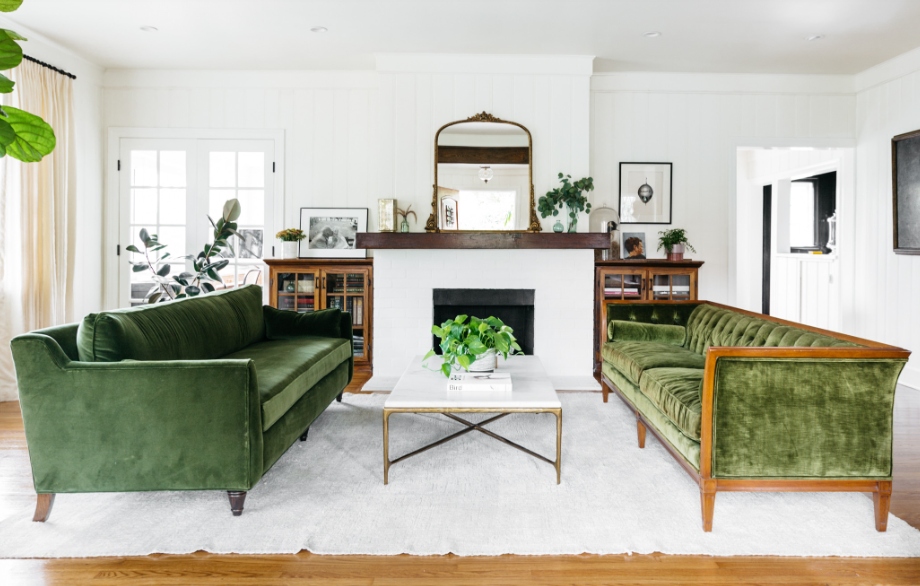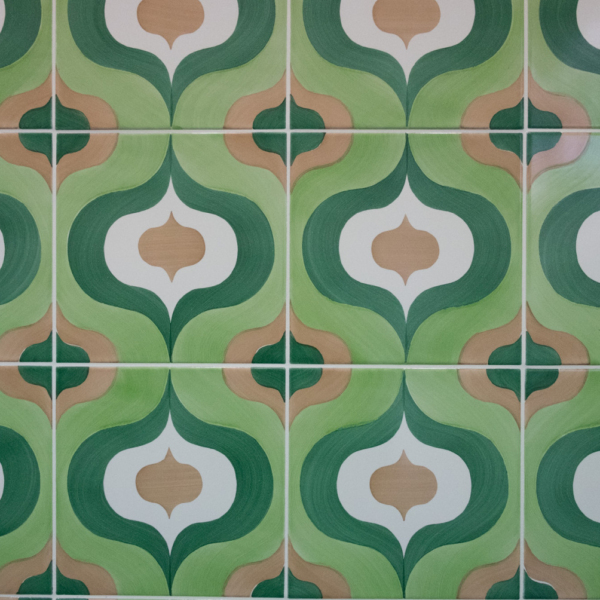Seating in the living room is a priority, so expanding your living room seating with two couches is an excellent way to make the best use of the available space. A living room with two couches offers both versatility and balance, creating a welcoming and functional space. Whether they match perfectly or complement one another in other ways, the key to styling them together lies in creating cohesion.
Thoughtful placement, complementary accessories, and a well-chosen color palette can all help to give your two-couch arrangement more depth and interest. From layering cozy textiles to incorporating decorative accents, there are so many ways you can enhance both comfort and aesthetic appeal.

There are endless varieties of ideas for styling two couches in a living room. Here are ten of the most useful and attractive ways to arrange them.
Symmetrical Layout
A symmetrical arrangement of two couches in a living room is the most common. Arranging two couches symmetrically, directly across from one another, creates immediate balance in the layout. This setup is ideal for entertainment because it encourages personal interaction. A symmetrical arrangement also feels seamless and polished, allowing for a clean, classical look.
Many homeowners choose identical couches for a symmetrical layout. This is the more formal and traditional option. But you can also opt for different couches on either side. In this case, it works well to unify the couches with colors, textures, or styles that complement each other. Whether couches are identical or different, the symmetrical arrangement maintains a sense of structure while allowing for creative styling that reflects your personal aesthetic.

L-Shaped Layout
Another way to utilize two couches to create a welcoming look is to arrange them in an L-shape. This works particularly well in an open-concept room or in rooms where you need to focus traffic flow. By positioning couches at a right angle, you clearly define a space while keeping the look open and welcoming.
This arrangement works well with both matched and mismatched couches. If they match, they can resemble a sectional in style, while using different couches can add character and interest to your space. To tie the layout together, use a corner table between the couches and anchor the area with a large area rug. Layer in throw pillows with complementing colors and patterns.
Unite With a Cohesive Color
A color palette that works to pull the room together can quickly unite two couches in a living room, even if they are different styles. Even if one couch has modern lines while another is more traditional, the matching color allows them to complement each other rather than clash. This approach works especially well in eclectic-style living rooms or transitional spaces where mixing styles adds character without feeling disjointed.
To enhance the cohesion of rooms with mismatched couch styles, layer in other textiles like throw pillows that have a unified color and pattern palette. A well-chosen rug can anchor the space, and coordinating accessories like wall art can further tie the area together.

Couches With a Matching Shape
Even if their colors or patterns do not match, using two couches with the same shape can create a sense of harmony and balance in a living room. Their similar silhouettes form a cohesive foundation, making the space appear structured and intentional.
You can introduce a diversity of textures to increase the visual interest and unity of the space, such as pairing a linen couch with a velvet one in the same shape. Layer in coordinating patterned throw pillows, a grounding area rug, and accent tables that can add depth and functionality to the design.
Mirrored Couches
When using mirrored couches—two identical couches placed across from each other—it is vital to add layers of interest to keep the design from feeling stale and one-dimensional. One way to achieve this is by incorporating a mix of textures, patterns, and accessories to elevate the design. Opt for using an array of fabric types like linen, cotton, wool, and velvet to add depth in other soft furnishings like throw pillows, blankets, curtains, and rugs. Add a statement coffee table that can serve as a focal point and break up the symmetry.
You can also use asymmetry in the surrounding decor, such as changing the heights of objects on the coffee table, side tables, and lamps, to add dimension and keep the room from feeling too rigid.

Pairing Contrasting Color Couches
Placing contrasting couches into one room can create a bold and dynamic look while still feeling cohesive with the right design elements. One approach is to create a unifying connection between the two couches through the use of accessories and decor. You can use throw pillows with similar colors and patterns on both couches or choose a bold rug that unites the couch colors. Also, you could incorporate accent pieces like wall art, vases, or curtains that have colors of both couches.
Back-to-Back Couches
Placing two couches back-to-back is an excellent way to define separate living areas in large rooms while maintaining cohesion in the space. This layout works especially well in open floor plans where one couch can anchor a formal seating area and another one can form the focal point for a more casual space.
To make the arrangement feel intentional, anchor each space with other furniture and accessories that match the purpose of the space. Matching or complementary colors help the layout feel connected and cohesive. As with any effective interior design, add an array of textures to give the design depth and visual interest.
Use a Couch and a Loveseat
A loveseat is a smaller version of a couch that typically seats two people rather than the three that most standard couches do. If you have a small space and cannot fit two couches comfortably, pairing a couch with a loveseat is an excellent way to maximize seating.
To maintain a cohesive look, select a couch and loveseat in the same or complementary fabrics or textures. Positioning them in an L-shape makes the room more welcoming and conversational, whereas placing them across from each other adds symmetry. A well-chosen coffee table, area rug, or accent pillows brings the pieces together and gives the room a more intentional feel.

Pair a Couch with a Settee
A settee is also a small version of a couch and typically smaller than a loveseat. Settees often have an elegant and spare silhouette, sometimes no back, and seat just one person. This is not the most optimal arrangement for maximizing seating, but it is an excellent way to add variety to a living room arrangement.
Select a settee with a complementary color or pattern as the couch to create balance. Use coordinating throw pillows and a rug to tie the piece together. Position the settee across or adjacent to the couch, depending on your room layout and where you want to direct traffic flow.
U-Shaped Layout
One layout that maximizes seating is a U-shaped arrangement using two couches and two side chairs. This layout can be accomplished in two ways: with the two couches facing each other and the chairs flanking one side, or with the couches arranged in a L shape with the two chairs facing one of the couches. This layout provides balance and symmetry while keeping the room open and accessible.
To ensure the space looks cohesive, make sure the couches and chairs complement each other in terms of style, color, and pattern. A large area rug can help define the space, while a large coffee table anchors the seating. To soften the symmetry, mix in a variety of throw pillows, layered lighting, and decorative accents. You can even try an irregularly shaped rug, like a cowhide, to make the shape feel less rigid.


